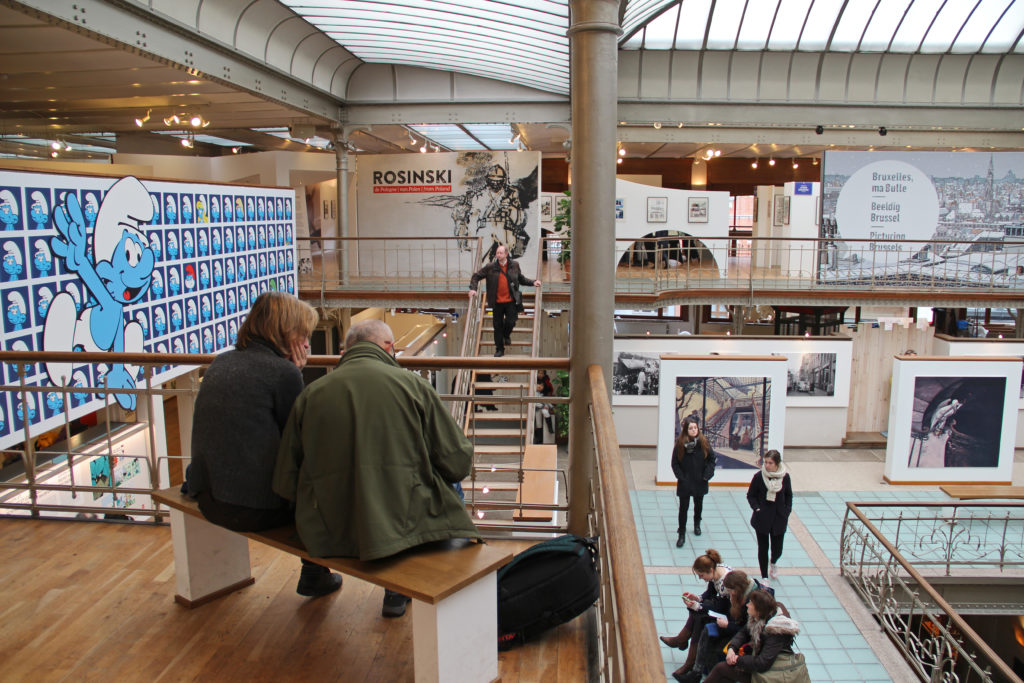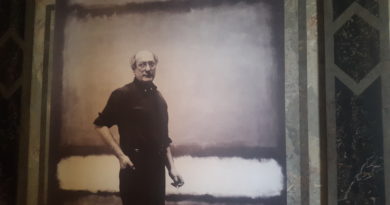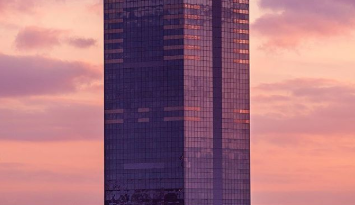The Museum of la Bande Dessinée
Located in the heart of Brussels, the Belgian Comics Art Museum is a museum that couldn’t be more typical for the city in which it’s housed. The main reason is that the museum symbolizes the junction of two art forms that have been thriving in the capital of both Belgium and Europe: Art Nouveau and comic strips.
The temple of the ninth art
With more than 700 comic strip authors, Belgium has more comic strip artists per square kilometre than any other country in the world! It is here that the comic strip has grown from a popular medium into an art in its own right. Nowhere else comics are so strongly rooted in reality and in peoples’ imaginations. Morris, the Belgian creator of the famous comic strip cowboy Luky Luke, was the rst to use the term Ninth Art. The title couldn’t have been chosen better, because comics are de nitely part of the heritage of the Belgians. All Belgians have read comics, they have at home a collection – small or huge – and, most importantly, they are proud of it. The Belgian Comic Strip Center has enhanced its prestigious, splendid Art Nouveau store designed by architect Victor Horta. The building, inaugurated in 1906, originally served as a warehouse to textile baron Charles Waucquez. This period (late nineteenth – early twentieth century) coincides with the beginnings of modern comic strips.
The non-profit organization “Belgian Comic Strip Center” was created in 1984. It is a private initiative, composed of French-speaking and Dutch-speaking members. Half of the members originate from the comic strips world or from professional associations of comic strip artists. The Belgian Comic Strip Cen- ter’s aims are twofold: to promote the comic strip as a valuable cultural medium, and to maintain the architectural masterpiece in which it is housed.
In 1975 architect Jean Delhaye, a student of Horta’s, succeeded in bringing the Waucquez warehouse, which had become an endangered masterpiece, to the attention of the state. The building was listed. Now all that was left was to nd a worthy new role… and the nancial means to restore the building. In 1983, urged by a couple of enthusiasts for urban development (Jean Breydel) and comic strips (Guy Dessicy), the Bel- gian Secretary for Public Works bought Waucquez Warehouse from the owners’ heirs with the express intention of securing the building in order to dedicate it to the promotion of comic strips.
In 1984 the “Belgian Comic Strip Center” was founded as a non-profit organization. Its chairman was Bob De Moor, Hergé’s well-known assistant, who had supported the project from the very beginning. The organization’s aims were simple: to promote comic strips and to maintain the architectural masterpiece that housed the project. On 24 April 1986, the launch of the project was celebrated in the presence of the entire Belgian comic strip community… in a building that was still very much a ruin.
Some intensive lobbying took place, including a sumptuous lunch at the Royal Palace with twenty major comic strip artists and a soirée with the entire Belgian comic strip community, the Belgian Comic Strip Center’s founders and the Belgian Secretary for Public Works. Then it was time for the restorers to move in. These had been appointed by the Régie des Batiments de l’Etat (1987) and were represented by architect Christian Lelubre. The architect who assumed the task of drawing up the restoration plans, taking Horta’s work into consideration and avoiding ‘fake classicism’, was Pierre Van Assche. The days of carpenters, glaziers, painters and floorers are long gone now. The building has become a magical place once more.
More than twenty-five years have elapsed since the opening of the Belgian Comic Strip Center. Twenty-five years at the service of comic strips and Art Nouveau. Twenty-five years of encounters. Twenty-five years of forging links between the world of comic strip artists and their readers. Twenty-five fascinating years for those who work at the Center. A promotional tool, an exhibition venue, a research center, a cultural ambassador: in more than ten years the Belgian Comic Strip Center has become a major museum with inter- national appeal, one of Belgium’s most popular tourist attractions with 200,000 visitors a year… and government subsidies which amount to less than 10% of the working budget.





